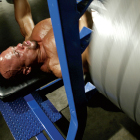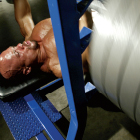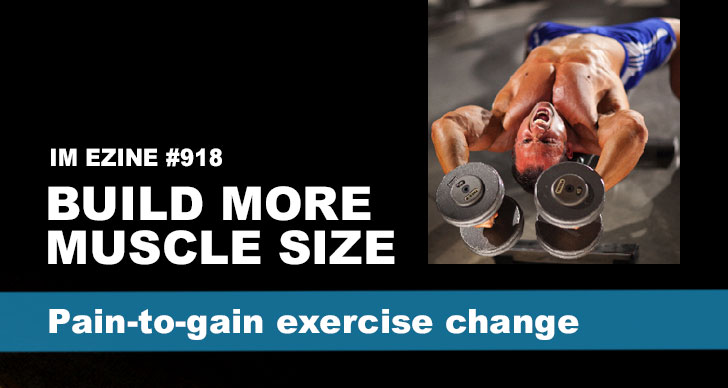

 Q: How did you go about cutting down while keeping size as a natty? I’m about to go on a cut, but every time I try it, I get pretty flat and seem to lose a lot of size in my upper body.
Q: How did you go about cutting down while keeping size as a natty? I’m about to go on a cut, but every time I try it, I get pretty flat and seem to lose a lot of size in my upper body.
A: This is a great question because decreasing your bodyfat while holding onto your muscle is a real science. It’s a delicate balancing act between eating enough calories to maintain your muscle tissue while still creating a caloric deficit (through diet and exercise) to lose bodyfat consistently.
The first step in getting ripped without losing muscle is to figure out what you’re eating in the off-season. Write down everything you eat so you know exactly how many calories as well as grams of proteins, carbs and fats you’re taking in each day. Having all that information will help you when you start constructing a diet to lose fat.
You may not know exactly how many calories to get when you first start your diet, so begin with the macronutrients. Protein is the most important macro because it’s the one that will help you maintain and even build more muscle tissue while you are losing bodyfat. Depending on how low you go with your carbs, I would recommend a protein intake of between 1.25 and 1.5 grams per pound of bodyweight per day when you’re getting cutr. For a 200-pound bodybuilder that would be 250 to 300 grams of protein per day, totalling 1,000 to 1,200 calories from protein.
Depending on your metabolism and what works best for you, you can eat less carb with a more moderate fat consumption or you can do the opposite—more carbs and less fat. If you have a fast metabolism and respond better to more carbs, you can probably start out with one gram of carb per pound of bodyweight. In our example the 200-pound bodybuilder would start out eating 200 grams of carbs, which equates to 800 calories from carb intake.
If your metabolism is very slow and you don’t lose bodyfat when eating more carbs, you can start off with 150 grams of carb and eat more fats. If you are eating 50 grams of fats with 200 grams of carbs—a total of 1,250 calories from carbs and fats—you would shift to 72 grams of fats with 150 grams of carbs. Including the protein, you would be getting 2,250 to 2,450 calories per day on this diet.
Younger bodybuilders or those with faster metabolisms may need more calories to maintain their muscle tissue while losing fat. When I was in my 20s and 30s, I would eat approximately 3,000 calories a day to get ripped. Now that I’m older, I have to reduce calories to 600 to 700 fewer than what I was eating to get ripped when I was younger.
Figuring out how many calories you need to eat in order to lose fat while still maintaining your muscle will take experimentation at first. Knowing what you are eating in the off-season will help you to determine how much you should take in when dieting. The key is to eat the most calories you can while slowly losing bodyfat. Aim to lose about one to 1 1/2 pounds a week in order to hold your mass.
It’s also important to keep training heavy when dieting. Switching to lighter weights will not help maintain muscle, especially when you’re getting fewer calories. Cardio can be an aid to losing fat, but start out slow and don’t do too much in the beginning. The combination of fewer calories and too much cardio will definitely add up to lost muscle.
Editor’s note: John Hansen has won the Mr. Natural Olympia and is a three-time Natural Mr. Universe winner. For information on his exciting new program, The MP6 Cycle Training, check out his Web site at www.JohnHansenFitness.com and become a member. To attend the Natural Olympia Fitness Getaway, go to www.NaturalOlympia.com. Send questions or comments to [email protected]. Look for John’s latest DVD, “Natural Bodybuilding Seminar and Competitions,” along with his book, Natural Bodybuilding, and his training DVD, “Real Muscle,” at his Web site or at Home Gym Warehouse, www.Home-Gym
.com. IM





















You must be logged in to post a comment Login